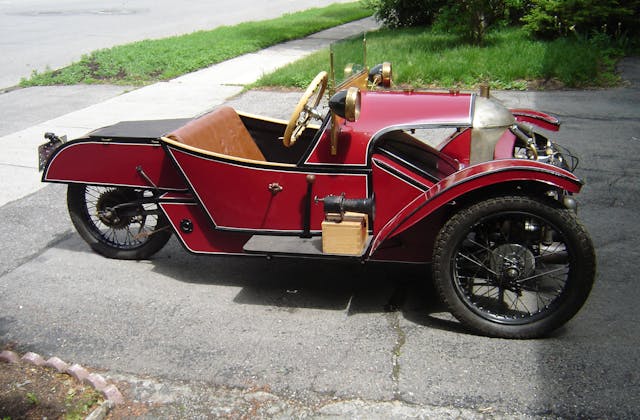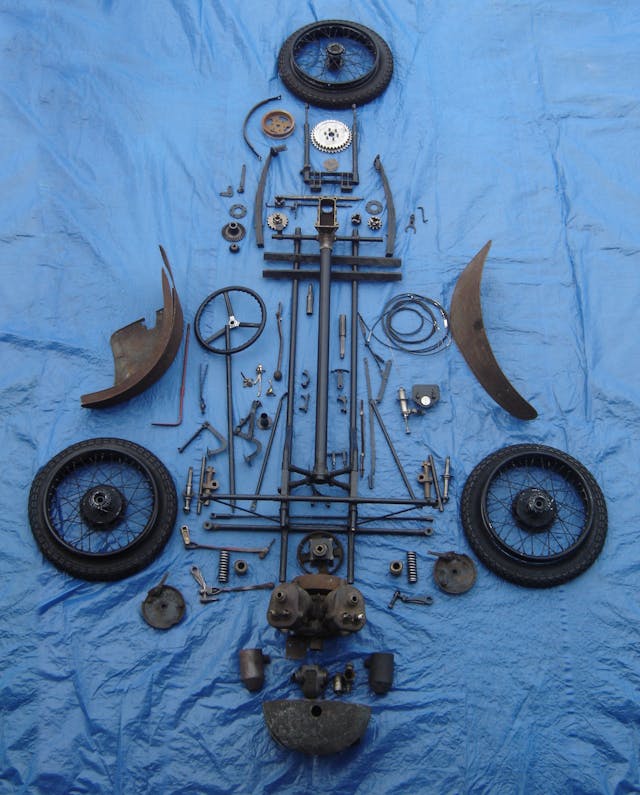This 1920 Grand Prix three-wheeler is as Morgan as it gets
The Morgan Motor Company began production of three-wheelers in 1910. The sliding-pillar front suspension, the exposed V-twin engine, and the shaft drive via bevel gears to twin rear chains were unique features that contributed to the marque’s success.
Three wheels and light weight meant the car could be driven on a motorcycle license and registration. The Morgan was not only cheap and reliable, however; it was also sporty. Pilots from WWI described the ride as the closest thing to flying while staying on the ground.
Our Grand Prix model dates largely from 1920, but with Morgan owners’ long-standing practice of maintenance, upgrading, and changing of components, it is difficult to say how many parts came out of the factory that year. The engine, a water-cooled V-twin JAP, is serial-numbered to that date.

When we acquired the car, the body was entirely absent, but with plans provided by the Morgan Three-Wheeler Club, we had it reconstructed precisely. Rebuilding the radiator proved to be a complex job because the cores were corroded beyond recovery, and the sheet brass had been severely abused during clumsy repairs. In the end, only the dome and sides were retained, but they are the most visible parts, which benefits the overall look of the car.
Aside from the body, many other parts had to be built from scratch, including the windshield brackets, the wooden battery box, and the seats and upholstery.

The clutch is a leather-faced cone within the flywheel, and it needs regular lubrication with neatsfoot oil, a product most often associated with treating saddlery. The two-speed transmission provides drive to the twin rear chains (one low ratio and the other high) through bevel gears connected to sliding dog clutches. The controls on the steering wheel are for the accelerator, the fuel mixture, and the ignition timing, while a pump and gauge glass on the dashboard deliver measured amounts of oil to the total-loss lubrication system. It’s all primitive, but it works.
Theoretically, 60 mph is feasible, but it’s 102 years old, so we tend not to push the little three-wheeler.
This article first appeared in Hagerty Drivers Club magazine. Click here to subscribe and join the club.


